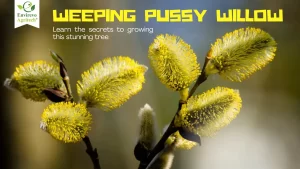Table of Contents
Crayfish, also known as crawfish, mudbugs, or freshwater lobsters, are fascinating creatures in ponds and streams — but a real headache when they invade your yard. Their tunneling can leave unsightly mud mounds, damage grass roots, and even cause drainage issues in your lawn.
If you’ve spotted suspicious mud chimneys popping up around your yard, you might have a crayfish problem. But don’t worry — in this guide, we’ll show you exactly how to get rid of crayfish in your lawn using the best control methods, from natural solutions to expert strategies.
What Are Crayfish and Why Are They in Your Lawn?
Crayfish are freshwater crustaceans that typically live in streams, ponds, and wetlands. However, when soil conditions are too wet — especially in low-lying, poorly drained yards — they start burrowing and can turn your lawn into a maze of muddy holes and chimneys.
These animals are most commonly found in southern U.S. states like Louisiana, Texas, Alabama, and Florida but can appear anywhere with suitable conditions. Their main goal? Find moisture and shelter — and unfortunately, your soggy yard might be perfect.
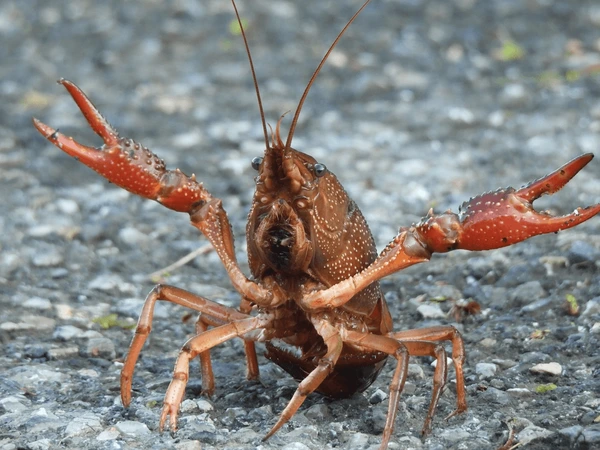
Signs You Have a Crayfish Problem
Before starting treatment, it’s essential to confirm that crayfish are indeed the culprits. Here are some telltale signs:
- Mud Chimneys: Small towers of mud surrounding holes in your lawn.
- Soft, Soggy Spots: Areas that feel spongy underfoot due to crayfish tunneling.
- Visible holes: Roughly 1–2 inches wide.
- Multiple Holes: A network of vertical burrows that weaken your turf.
- Poor Drainage: Water pooling more than usual in certain parts of your yard.
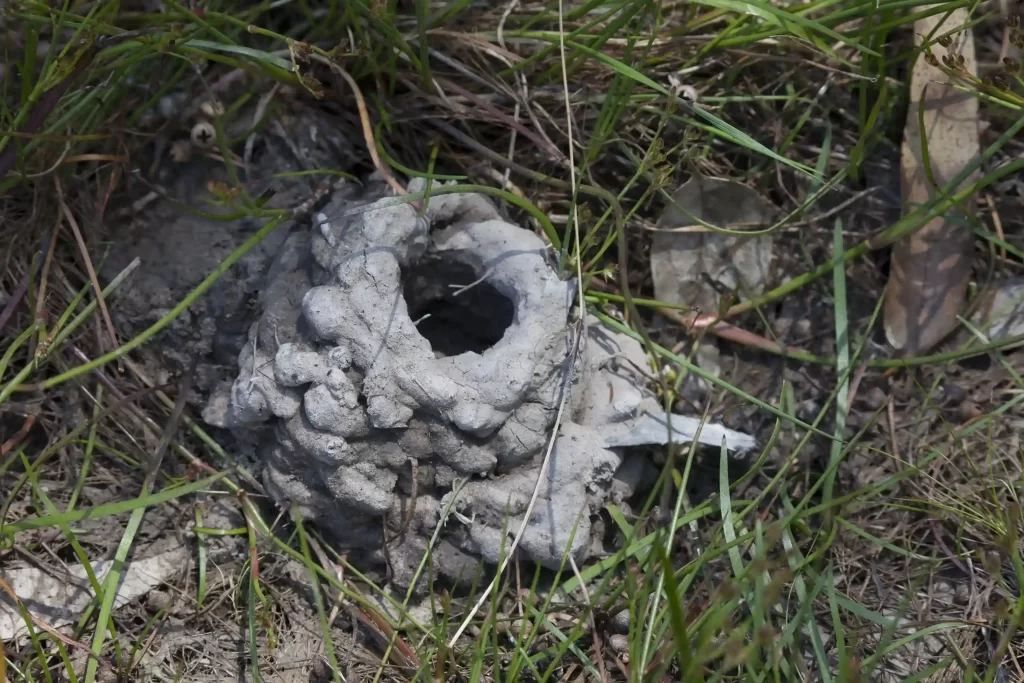
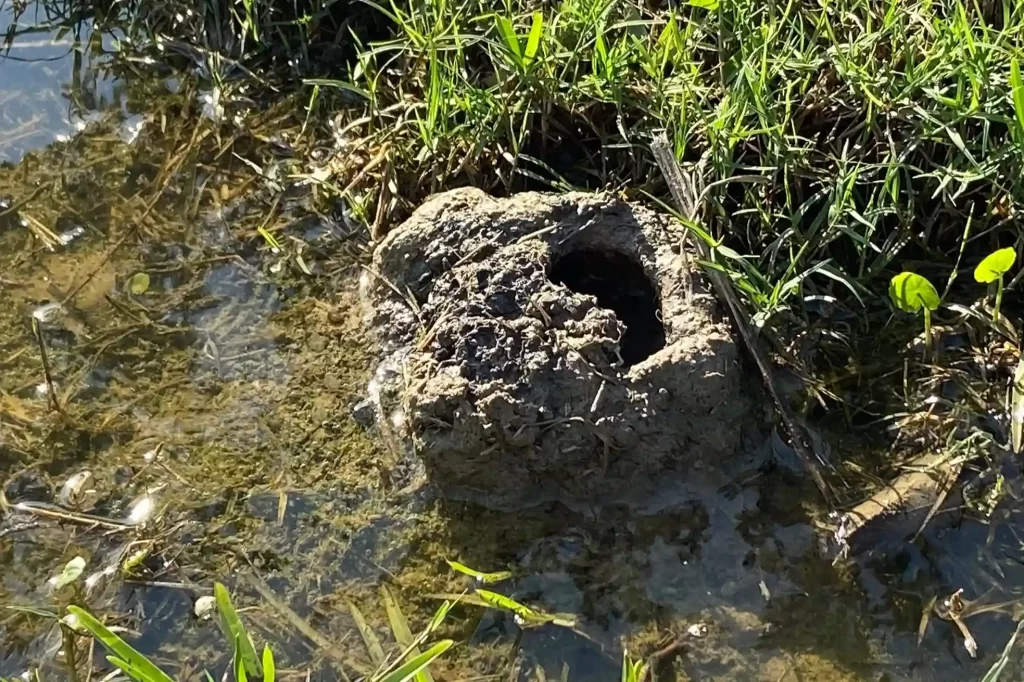


Crayfish burrows can reach depths of over 3 feet, making them a serious threat to lawn health if not addressed early.
How to Get Rid of Crayfish in Your Lawn: Best Control Methods
1. Improve Lawn Drainage
Crayfish love wet, marshy soil. By fixing your drainage problems, you make your yard far less inviting.
- Aerate the soil: Use a core aerator to improve soil airflow and drainage. Core aeration relieves compaction and promotes better water movement.
- Fill low spots: Topdress with sand or a sandy loam mix to raise problem areas.
- Install French drains: These underground trenches redirect water away from saturated areas.
- Adjust landscape grading: Ensure the slope directs water away from your home and lawn.
Tip: Good drainage alone can naturally force crayfish to relocate.
2. Limit Watering to Prevent Crayfish Activity
Overwatering is one of the main reasons crayfish invade lawns.
- Water Deeply but Infrequently: Aim for 1 inch of water per week, including rainfall.
- Check Soil Moisture: Stick your finger into the soil — if it feels wet an inch down, skip watering.
- Adjust Sprinklers: Ensure you’re not soaking low spots unnecessarily.
Keeping the soil moderately moist — never saturated — is essential to discourage crayfish.
3. Use Safe and Effective Repellents
While there are no chemical pesticides officially registered for crayfish removal in lawns, some natural solutions can help deter them:
- Lime: Spreading agricultural lime can make soil less appealing by raising pH levels.
- Sulfur Granules: Their strong scent can repel crayfish and other burrowing pests.
- Commercial Repellents: Look for lawn-safe formulas marketed for moles and voles, as they often work against crayfish too.
Warning: Always test a small lawn area first when using any soil amendment.
4. Manual Removal of Crayfish
If the infestation is mild, you can catch and relocate the crayfish yourself:
- DIY Crayfish Traps: Use a baited funnel trap placed near active mounds. Crayfish are attracted to fish-based baits.
- Flood and Capture: Gently flood the burrow with water to coax the crayfish out, then capture it by hand (wear gloves).
- Bucket traps: Bury a bucket at the burrow entrance and cover it lightly; crayfish fall in but can’t escape.
- Relocation: Check your local regulations, but in most areas, releasing them into nearby streams or wetlands is acceptable.
⚠️ Important: In some states, relocating wildlife like crayfish requires permission from local fish and game agencies.
5. Professional Pest Control Solutions
If crayfish have heavily infested your yard, calling in experts is the smartest move.
- Targeted removal: Experts can trap crayfish efficiently.
- Habitat management: Professionals can recommend permanent drainage solutions.
- Safe chemical use: In extreme cases, licensed applicators can use eco-friendly treatments.
6. Apply Bait Pellets Near Active Burrows
Special crayfish baits like Quick Kill Bait can help target them more effectively:
- Where to Apply: Sprinkle bait pellets 1-2 feet around each active mound entrance.
- When to Apply: After a light rain or light watering to soften the soil — this encourages crayfish to forage.
- Frequency: Repeat applications every 2-3 weeks during the active season (spring and late summer).
✅ Tip: Always choose baits that are safe for pets and non-target wildlife.
7. Flood and Bait Combination Method
For stubborn infestations:
- Lightly flood the crayfish burrow with water.
- As they emerge, apply bait or traps to capture them.
- Follow up by applying repellents or soil amendments to discourage re-burrowing.
This dual method is more effective than flooding or baiting alone.
8. Create a Barrier Treatment Around Problem Areas
To prevent crayfish from spreading:
- Use Granular Repellents: Products containing castor oil or sulfur can create an invisible barrier.
- Treat Lawn Perimeters: Focus on wet zones and areas bordering ponds, ditches, or streams.
- Reapply After Heavy Rains: Water dilutes repellents, so maintenance is key.
9. Crayfish Sound Repellers
For a more permanent fix after using granules or sprays, consider installing solar-powered sound repellers. These devices stand out because they combine vibrations, rattling sounds, and flashing LED lights to create an environment crayfish find uncomfortable.
- How They Work: Powered by the sun, these repellers emit ground vibrations and sound waves at varying cycles, preventing crayfish from getting used to them. At night, built-in white LEDs flash, further disrupting crayfish activity.
- Coverage: Each unit can eventually cover up to 5,000 sq. ft., though initial placement needs strategy:
- Start by forming a line at the outer edge of active crayfish mounds, spacing units 30 feet apart.
- Every week, move the repellers about 10 feet further into the crayfish-infested areas, gradually pushing them back.
- To prevent them from sneaking back, leave at least one unit guarding the cleaned area (about 4,000 sq. ft. coverage per unit).
- Pro Tip: Once your yard is crayfish-free, set the repellers in a checkerboard pattern for complete protection.
Important: Charge the units in sunlight for two full days before installation, and always treat active burrows first with sulfur, pest repellents, or gas cartridges for best results.
Pro Tip: Best Time to Control Crayfish
The ideal time to act is early spring when crayfish emerge from deep burrows or after heavy rains when they are closer to the surface.
This is when baiting, trapping, and repellent treatments are most effective.
Are Crayfish Harmful to Your Lawn?
Yes. While they don’t directly eat grass or plants, their digging causes:
- Root Damage: Disrupting soil structure and cutting off grass roots from nutrients.
- Drainage Problems: Their tunnels allow water to pool, leading to fungus and rot.
- Soil instability: Tunnels weaken the lawn structure, causing sinkholes.
- Flooding: Disrupted soil compaction can worsen water retention issues.
- Trip Hazards: Deep holes can cause injuries to pets and children.
- Attract Predators: Animals like raccoons and snakes may be drawn to your lawn to hunt crayfish.
Long-term crayfish presence often leads to costly lawn repairs if left unchecked.
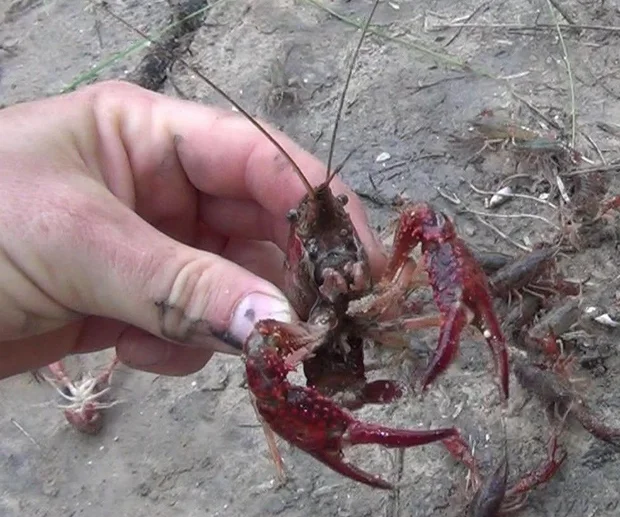
How to Prevent Crayfish from Coming Back
Prevention is crucial for lasting results. Here’s how to make your yard less attractive to crayfish:
- Maintain Good Drainage: Regularly aerate and fix low spots.
- Limit standing water by fixing leaks, gutters, and low spots.
- Avoid Overwatering: Stick to deep, infrequent watering schedules.
- Apply Repellents Seasonally: Especially before the rainy season.
- Monitor Lawn Health: Inspect for new mounds and act quickly.
By keeping your lawn dry and well-maintained, you reduce the chance of future crayfish problems.
Final Thoughts
Crayfish can turn your beautiful lawn into a muddy mess if left unchecked. By improving drainage, reducing watering, using safe repellents, and manually removing intruders, you can reclaim your yard from these unwelcome guests. Remember: early action is key. If you spot those telltale mud chimneys, start treatment immediately — and if things get out of hand, don’t hesitate to call in the pros.
Have you battled crayfish in your yard before? Share your experiences or ask your questions in the comments below — we’d love to help!
Frequently Asked Questions (FAQs)
Do crayfish bite?
Crayfish have pincers but are generally not aggressive. However, they can pinch if handled carelessly.
Are crayfish in the lawn dangerous?
Not directly, but their burrows can weaken turf and create hazards for people and pets.
Can I use chemicals to kill crayfish?
No chemical pesticides are legally registered for crayfish in lawns. Use natural repellents or manual removal methods instead.
Will crayfish go away on their own?
Unlikely, especially if your lawn remains wet and suitable for burrowing. Proactive control is necessary.
Are crayfish harmful to pets or children?
Crayfish are generally not dangerous to pets or children. However, they can pinch if handled and their burrows can create tripping hazards in the lawn. It’s best to avoid direct contact and manage infestations promptly.
Can crayfish damage underground utilities?
Yes, in severe cases, crayfish burrowing can disrupt underground irrigation lines, pipes, and drainage systems. Their tunnels can weaken soil structure, leading to costly repairs if left unchecked.
Is it legal to kill or remove crayfish from my yard?
Laws vary by location. In most areas, it’s legal to control nuisance crayfish on private property, but in some states, certain crayfish species are protected. Always check your local wildlife regulations before using lethal methods.
Do crayfish only appear in wet seasons?
Crayfish are more active during rainy seasons due to higher soil moisture, but in some areas with high water tables, they can be a year-round problem.
How deep do crayfish burrow?
Crayfish burrows can go as deep as 3 to 6 feet, depending on soil moisture and groundwater levels.







